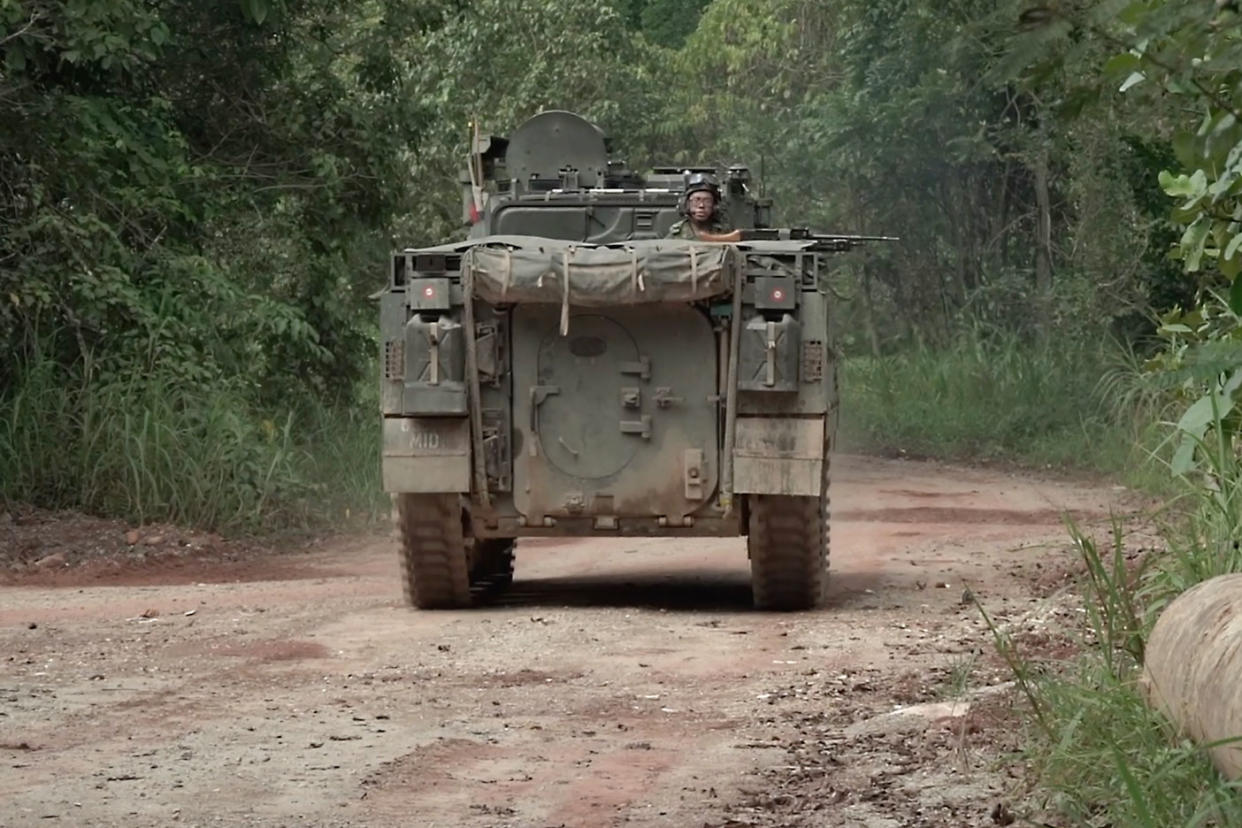Parliament: New SAF safety measures to include rear view cameras for Bionix vehicles

Rear view cameras and additional emergency horn (e-horn) activation buttons will be installed in the Singapore Armed Force’s Bionix vehicles, said Defence Minister Ng Eng Hen in Parliament on Monday (11 February).
From March, the cameras will be progressively installed into the the training fleet of Bionix vehicles, so that the driver can see while reversing, he said in his Ministerial Statement during which he announced a series of safety-focused changes to be implemented by the SAF.
“All heavy wheeled vehicles, such as five-tonners, will also be progressively installed with rear view cameras and mirrors to reduce blind spots,” he added.
In addition, two more e-horn buttons have been installed in the rear of all Bionix training vehicles used for training. This allows the rear guides to sound the alarm in the event of an intercom failure.
The move comes in response to findings from a Committee of Inquiry (COI) and an internal review by the Ministry of Defence (Mindef) into the death of Corporal First Class (NS) Liu Kai last November.
Liu had been driving a Land Rover during a training exercise when a Bionix vehicle reversed into it. The COI had found that the Bionix driver did not heed the commands of his vehicle’s rear guide to stop the vehicle until it was too late.
Table top exercises, more training for medics
As with live-firing exercises, the SAF will now conduct safety table top exercises for all high-risk non-live firing exercises before operations are actually carried out.
Medics will also have their skills upgraded in the areas of resuscitation and handling of emergencies. This will be done through having them attached to hospital emergency departments or ambulances, among other measures.
A new Inspector-General Office for safety
The current Safety and Systems Review Directorate (SSRD) will also be expanded and elevated to an Inspector-General Office (IGO) under purview of the Chief of Defence Force (CDF). This had been announced on 31 January by CDF Lieutenant-General Melvyn Ong.
Dr Ng told the House that the IGO will be “a dedicated unit… at the highest level to drive and supervise a safety culture and enforcement against slack practices”.
“More safety officers will be deployed to assist individual units and supervise training activities. There will be more safety audits of units by inspection teams at the Services and supervised by the IGO.”
In addition, commanders of units which do not meet safety standards and have committed lapses in safety procedures and processes will have this marked against them in their performance reviews.
“Let me emphasise that such commanders will be deemed to have performed unsatisfactorily even if accidents have not occurred. This is the right emphasis to prevent accidents,” said the minister.
Four training-related deaths
Including Liu and local actor Aloysius Pang, there were four SAF-training related fatalities from September 2017 to January this year.
Following Pang’s death, top SAF commanders called for an army-wide safety timeout as well as a reduction in training tempo across the army, navy and the air force.
The timeout, which was partially lifted last Thursday, is one of the longest ever imposed in the SAF.
A five-man Committee of Inquiry (COI) was convened on 25 January to investigate the circumstances leading to Pang’s death.
At a Parliamentary sitting last May, the Defence Minister said that there has been an average of one NS training-related death a year over the past two decades. He also noted that there were no training-related deaths from 2013 to 2016.
Related stories:
NSF Liu Kai’s death: Bionix driver did not hear commands to stop



